Problems When Working With Eco friendly You Can’t Ignore
Spoiler alert, This writing is gonna big, detailed, and data-proven. If you want to read like others writing in a short form with paraphrases by AI then you can simply ignore it. First, we need to fear what we did and doing with climate as well as eco-friendly innocence.

From a recent statement by NASA, Norway’s Ålfotbreen glacier is rapidly shrinking. Both images were taken during summers when significant melting occurred. This glacier grew as recently as the 1990s but has been getting smaller since then due to more frequent and intense heat waves. Scientists have found that ice loss from mountain glaciers globally has been speeding up over time.
In January 2020 Australia faced a monster storm which just shakes the world. Those who witnessed this scene with their eyes named this incident “like an apocalyptic movie”. The only cause of this situation is climate change and the increase in sand and dust levels around the world due to this climate change is the cause of these dust storms.




Do you all remember that in 2022 Pakistan’s economy nearly collapsed due to a flood? The man-made coronavirus situation combined with floods and poverty created a difficult situation in Pakistan at that time. “Even after three weeks, large parts of the flood-affected areas are still submerged under water. Thousands of families in the 81* calamity-hit districts are still cut off and desperately need support. Families have no food, clean water, or medicines.” Gerida Birukila, Chief Field Officer, UNICEF Pakistan

From Business Insider, Because of me and you, the drought that happened in 2020 and the drought in which six giraffes died brutally. Will you pay attention? As a result, two and a half million Kenyans were also unable to eat at that time

Why we are writing, because of the above causes and so many others, we were also shocked and amazed. Is this situation we are going to leave for the next generations? Do you want to get lost your children in a sandstorm in your city? Want to see your children cry to live while drowning in a flood? Or do you want to leave everyone hungry poverty and malnourished? Well, we don’t know but we will figure out the answer with your engagement of being eco-friendly.
What does eco-friendly mean? that can inspire You
This is a word that means the environment thinks you are not using any product or anything harmful or destructive to it. The term is essentially a specific position of environmental description that applies to both products and legislation in most senses.
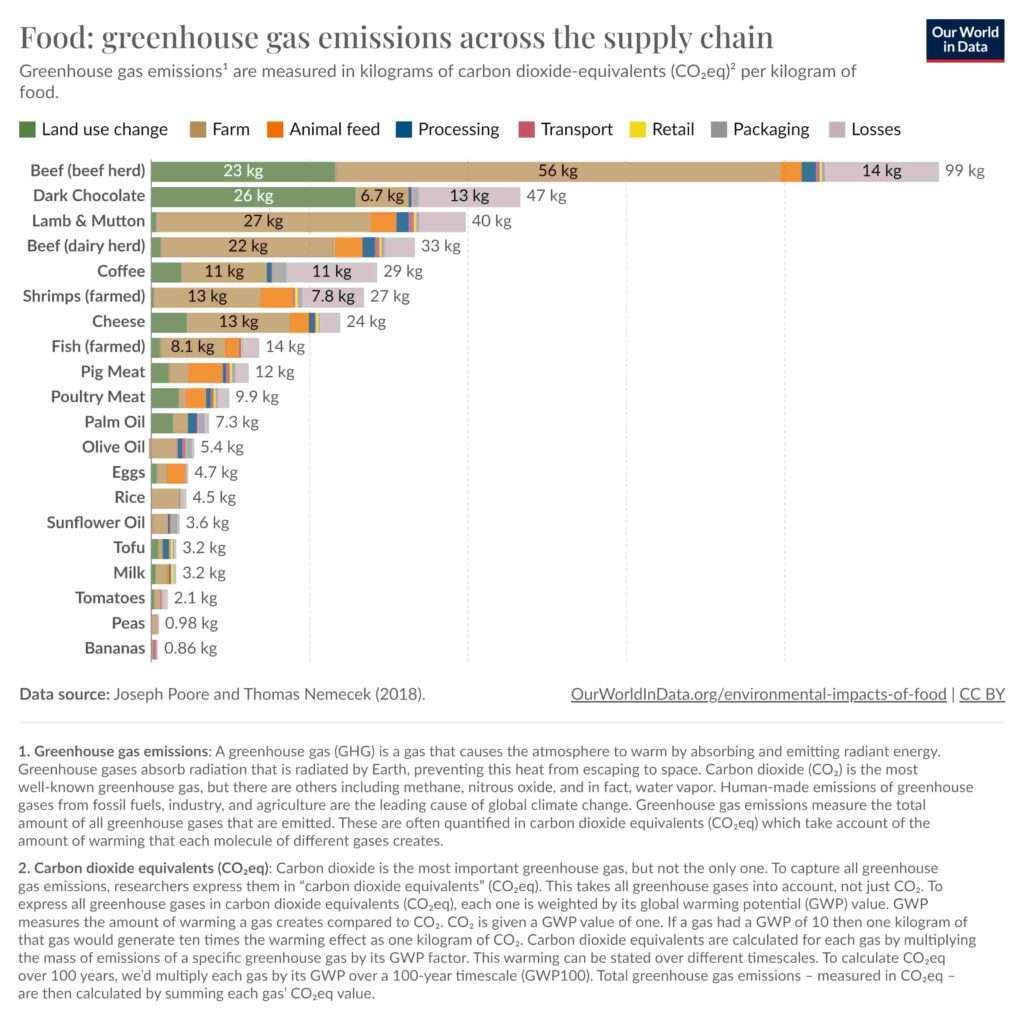
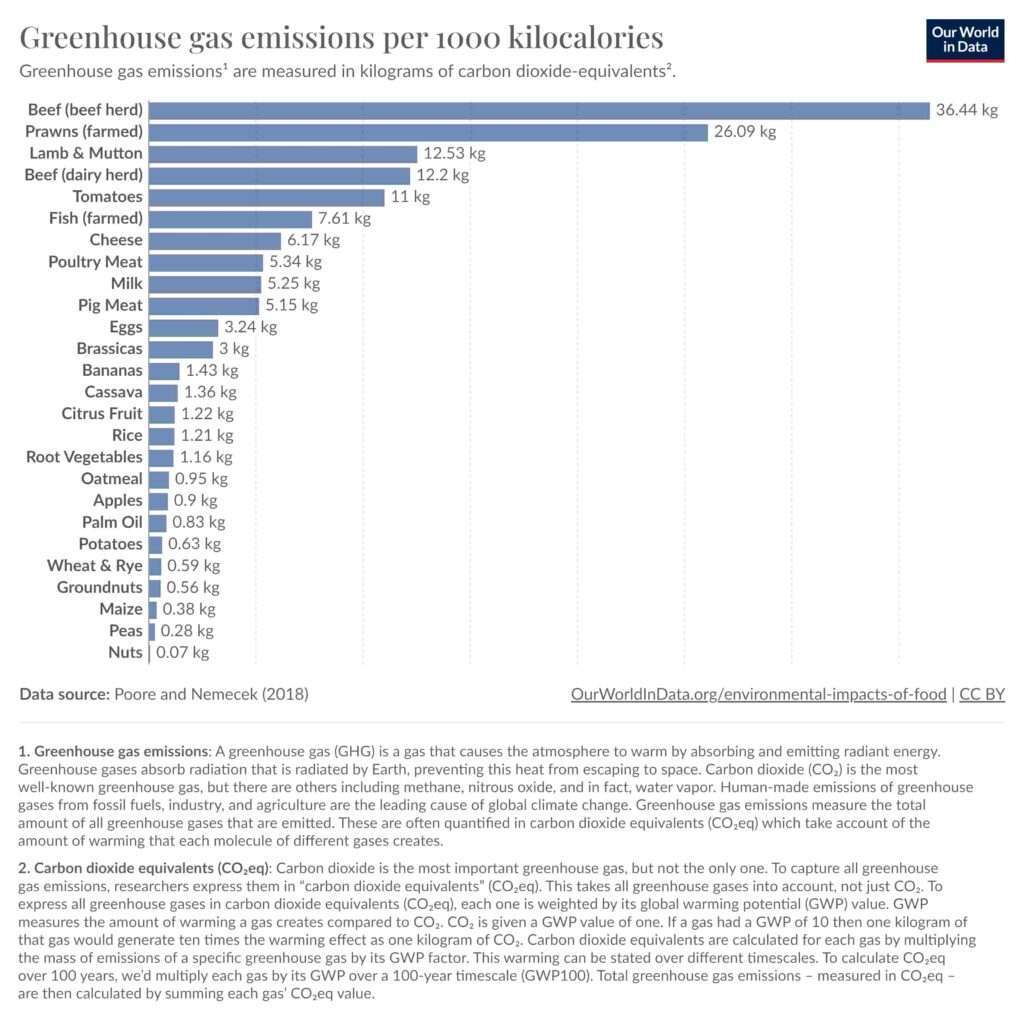
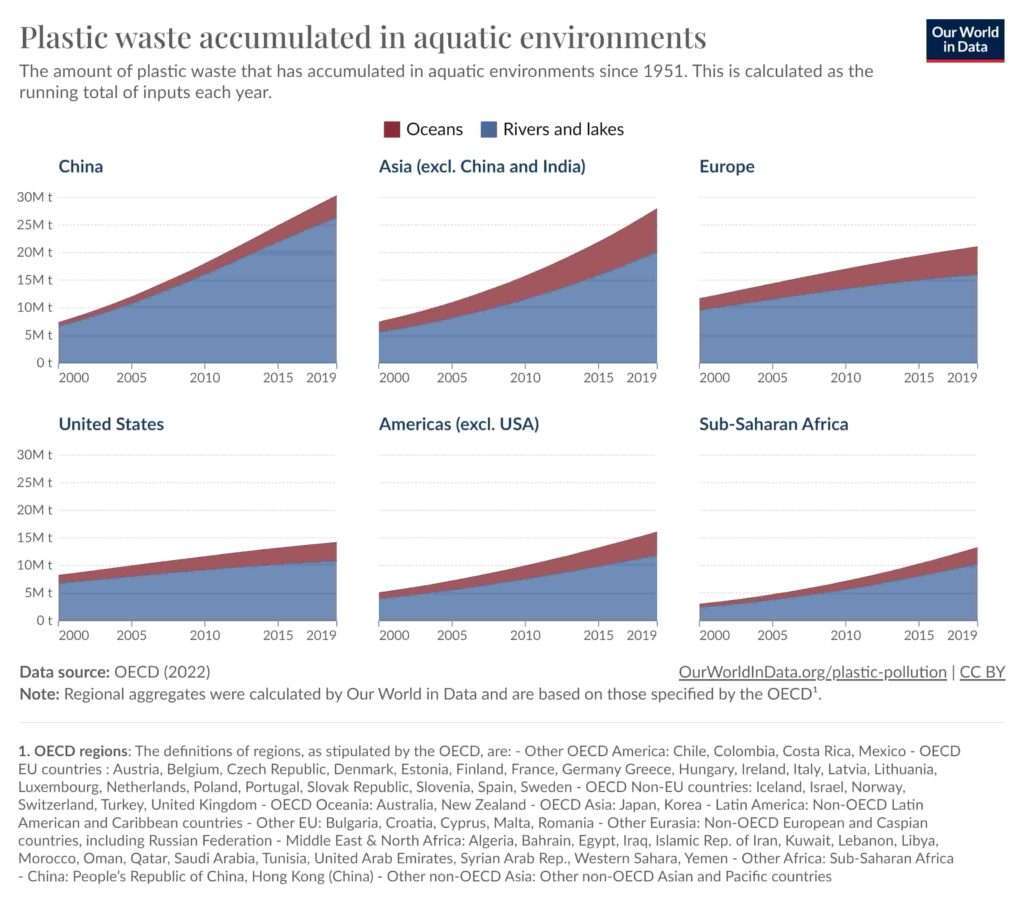
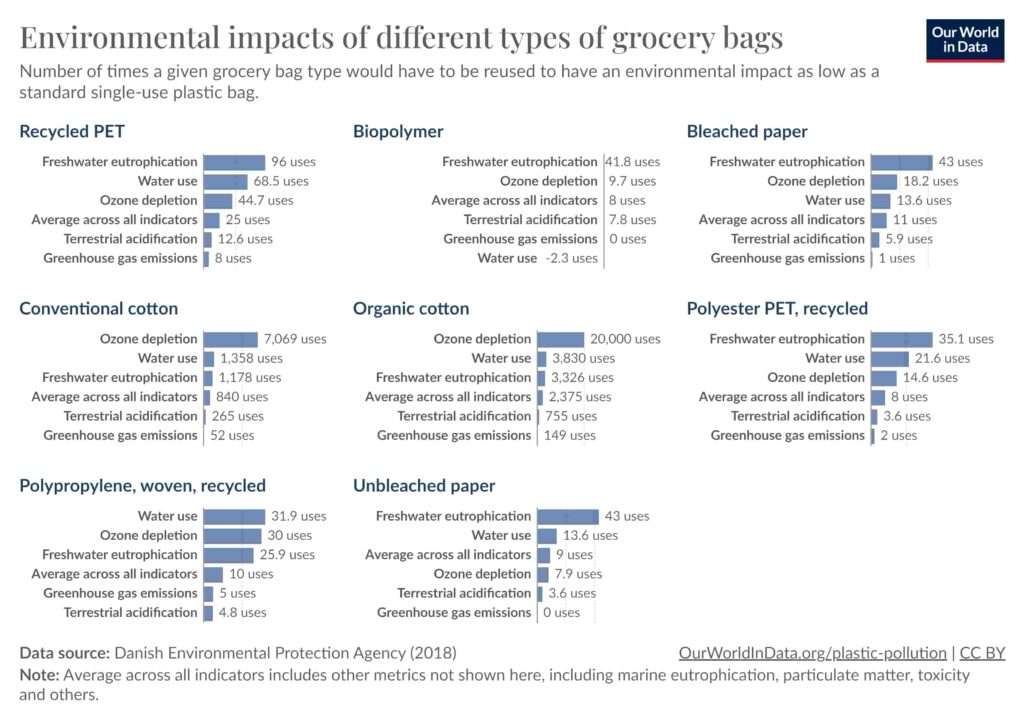
To be more detailed, the information given above refers to all the ways or products we can do or comply with the law to be environmentally or eco-friendly.
Why do you need to work on being Eco-Friendly? Take a look
The United Nations predicts that by 2100, the global population will reach almost 11 billion people, an increase of three billion from today. With such a significant population boom, it becomes crucial to find sustainable housing solutions. For this reason, there are many questions about how we can accommodate this growth without exacerbating the environmental problems caused by climate change. While clean energy grids fueled by renewables like solar, wind, nuclear, and geothermal offer hope for existing cities, they are not yet fully developed. The challenges range from transmission line issues to the complex politics surrounding nuclear energy. As a result, clean grids cannot fully address the immediate need for sustainable housing in rapidly growing urban areas. Believe it or not, humans are the main cause of climate change. We burn fossil fuels to generate electricity. We cut down forests to build homes and factories that raise average temperatures around the world. From recent data from the Environmental Defense Fund, Earth has already warmed by about 1 degree Celsius, or 1.8 degrees Fahrenheit, since the 19th century, before the industry started to boom. While we experience the effects, we’re on our way toward 1.5 degrees C (2.7 F) by as early as 2030. The increased evaporation and additional moisture to the atmosphere have led to 30% more intense rain during heavy downpours in that part of the U.S. One of the reasons humans are facing the economic hardship caused by their actions is warming the Earth by half a degree.
Let us show some snapshots to you,

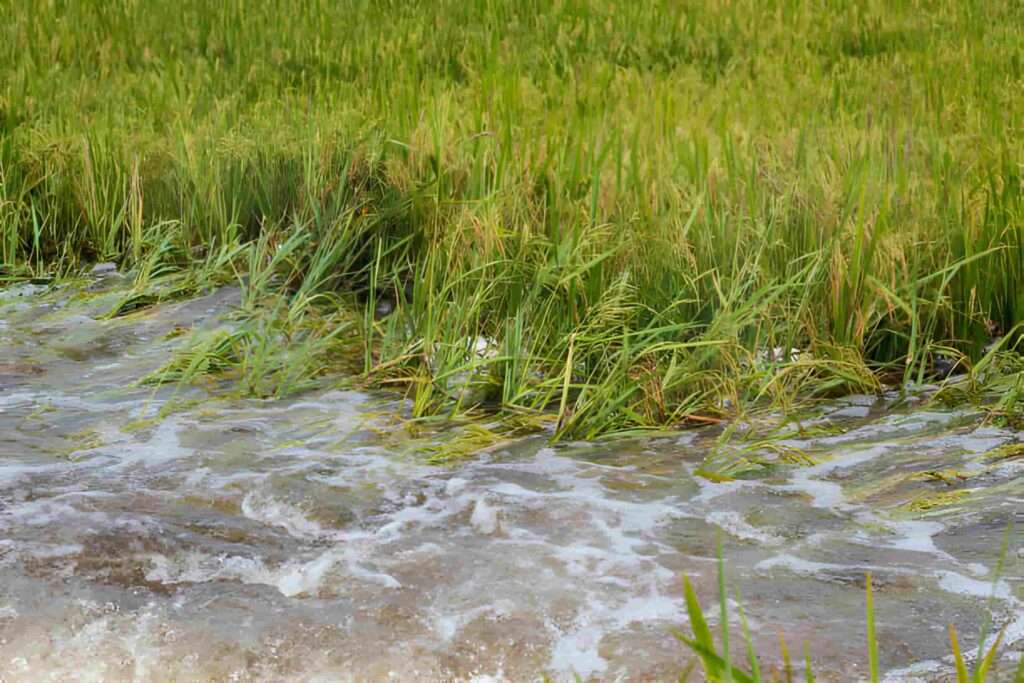
Did you know that billions of dollars are lost worldwide every year due to sea level rise alone? Increased ocean heat flux destroys ecosystems and the coastal communities that depend on them. Weeks, months, and years of unusually warm water prevent corals from moving properly and wipe out military algae. Fundamentally, many gaps remain in our knowledge of ocean heat waves. Even what exactly constitutes an ocean heat wave is still under debate.
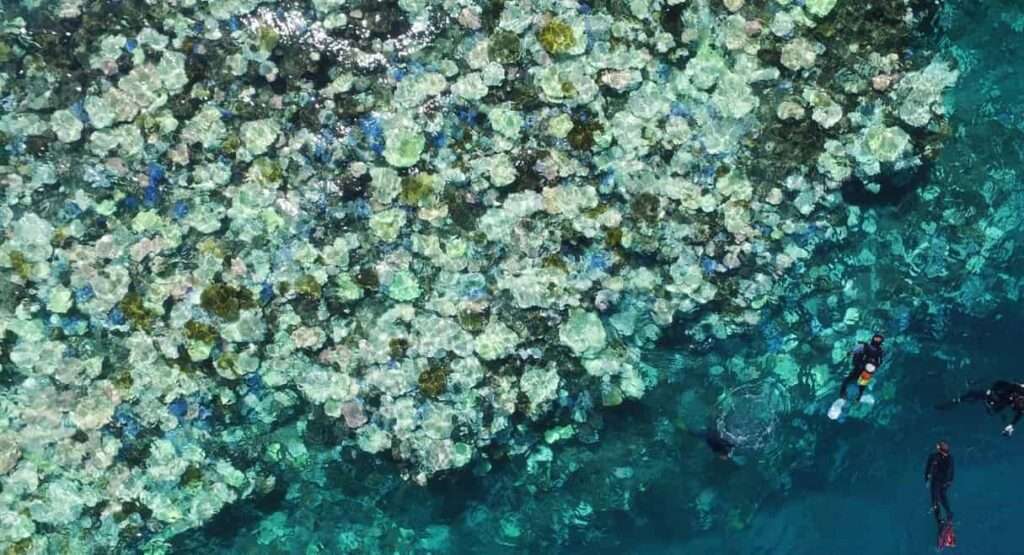
A recent survey conducted under contract for Earth Hour discovered that about 86.8% of people were concerned about climate change, either very (43.8%) or moderately (43%). Merely 13.2% expressed that they “don’t care.” Although 51.9 percent of survey participants claimed that climate change had little effect on their daily lives, they also stated that inclement weather frequently caused delays in their commutes to work. Over 47% of respondents to a poll conducted by Opinion Matters stated that they experienced delays on average one day every month. If extrapolated to the entire commuting population, around 1.4 million persons would be impacted by the roughly 13% of commuters who experienced delays on three to five days per month. Well Of course we all need to care. Right?
Eco-friendly sustainability based on recent innovations and trends
We need new technologies and complex solutions for ever-new problems. As the world’s population continues to grow and demand for environmental pollution increases, new technologies and simple solutions to complex problems become the only necessity for our survival. It is our today’s crisis. But science is dense and politics in its way. As billions of people around the world are demanding, we stand in solidarity with them on the urgent need to take proper action and plans to curb pollution and climate change and be eco-friendly. Having said that we’ll discuss technologies and concepts that you won’t normally see anywhere else. Let’s start with our most talked about plans for 2024 that will help us go green the right way and slow down climate change.
- Explore the advancements in storing renewable energy efficiently and the impact on reducing emissions in cities – We store many of the things we use in our daily lives and this habit has been around for a long time. Renewable energy sources like solar and wind power struggle to meet these peak demands. As a result, power companies rely on fossil fuels, such as natural gas, to bridge the gap. Think about it. If you can store your environmentally friendly energy, you don’t usually have to take or produce it all day. Many of us who are worried about eco-friendly energy storage and storage can get rid of such problems with this idea. You can store solar energy in batteries. But naturally, a problem also arises how much do we need batteries to store? A lot. And that wouldn’t be an eco-friendly idea. So is there any upskilling a way to mitigate this? Pumped storage hydro, a type of energy storage, has been around for decades and offers a promising solution. We get this from Vox. Using this method, potential energy can be generated to transfer water from lower aquifers to higher aquifers through fossil fuel energy. When energy is needed the water is released and the potential energy is converted into kinetic energy to generate electricity through turbines. Pumped store hydro is highly efficient with only 10% energy loss.
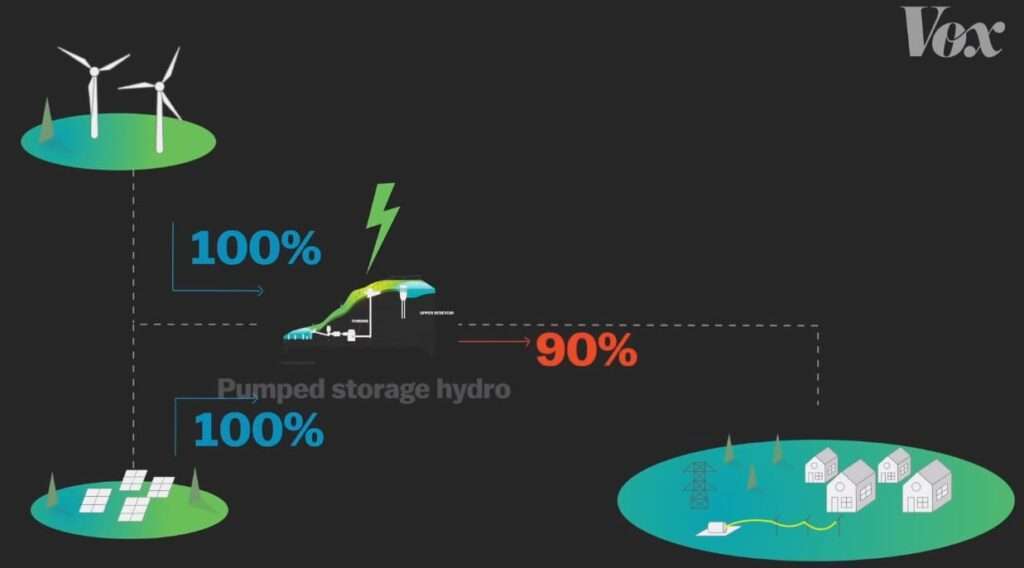
FAQ
Are there any other energy inventions that happened to date?
Yes, Such as Gravity Energy Storage, Geomechanical Pumped Storage, Thermal Energy Storage, and Iron Air Batteries.
- Discuss innovations that deliver food with zero emissions, reducing the carbon footprint of food delivery services – Don’t use plastic, Be fantastic. Currently, we are using approximately 350 million tons of plastic material per year, and shockingly, around 10% of it ends up in our oceans. This is not the way to utilize plastic if we want to protect our environment and oceans. However, there is hope. A solution has been developed that aims to use agricultural residuals to produce packaging materials, offering a more sustainable and eco-friendly alternative. By agricultural residuals, we mean the byproducts of farming, such as rice straw, banana stems, and leaves from sugar cane. These seemingly useless plant materials can be converted into self-binding fibers, which are the building blocks for creating sustainable packaging materials.

- AI in Sustainable Food Production – About 11 million deaths a year can be blamed on dietary factors, but developments in artificial intelligence for food production could alleviate the problem, and make the food sector more sustainable. Brightseed a San Francisco company, uses AI to discover new nutritional compounds within plants that offer health benefits to both humans and animals. Less than one percent of these compounds are currently known. So far, the company has raised over $50m in funding. In Canada, start-up SomaDetect uses optical sensors and deep learning algorithms to provide dairy farmers with real-time information about herd health and milk quality. The company believes that increased milk production per cow, thanks to better management, will lead to lower greenhouse gas emissions since fewer cows will be needed.
- Data Analysis in Disaster Management – Disasters can strike at any time and it is important to have systems in place to minimize the impact on human lives and infrastructure. AI can play a vital role in disaster management by providing accurate and real-time information assisting with rescue operations and predicting and preventing disasters. AI refers to the development of computer systems that can perform tasks that usually require human intelligence such as visual perception, speech recognition, decision-making, and language translation. Disasters can cause widespread destruction resulting in loss of life property damage and economic losses. Effective disaster management can help mitigate the impact of disasters and save lives. Ways in which AI can Aid disaster management by providing real-time information. AI systems can collect and analyze data from various sources including social media satellite imagery and sensors to provide accurate and timely information about the disaster. For example during a hurricane AI systems can analyze satellite images to track the storm’s path and intensity. This information can be used to issue timely warnings and evacuation orders to the affected population. There are also challenges that need to be addressed. One of the biggest challenges is the lack of data. AI systems rely on data to learn and improve and in many cases, data on disasters is limited or unavailable. In addition, AI systems can be prone to bias. If the data used to train them is biased, this can lead to inaccurate predictions and recommendations which can have serious consequences in the conclusion.
- Sustainable Finance – By sustainable financial investment decisions we mean the process of bringing together environmental, social, and governance, which initiates the direction of more long-term investments in sustainable economic activities and projects. If we talk about the sustainable finance market then this market consists of various key players like financial institutions asset managers regulatory agencies like the London Stock Exchange Group KPMG CPP Investments Doweche Bank, and other officials who are prominent companies and prominent in the finance industry. When we bring this trend of sustainable money investment to an environment-friendly stand, we can call it green money investment or green finance. Green finance can be said to be a specific and concise example of finance. The best definition we can get is from the United Nations. “Green financing is to increase the level of financial flows from public-private and not-for-profit sectors to eco-friendly development priorities.” – United Nations Environmental Programme. The goal here is to manage environmental risks and take up opportunities that provide environmental benefits and a decent rate of financial return. Green bonds, green banks, carbon financing, and community-based green funds are all examples of green financing instruments.
FAQ
If green finance is this win-win situation how is it that a huge bulk of investment still isn’t green?
Answer
Green projects still have several technology risks associated with them. For example, there is some incomplete news regarding energy storage and weather-related solar panels. Therefore this makes it difficult for financial institutions to evaluate the financial risk for these types of green projects. Coupled with this is the problem of insufficient data since many businesses and governments do not publicly disclose their environmental performance and advancements. Information on the successes and tragedies of green initiatives is limited. Financial institutions find it challenging to determine pricing and control their environmental and financial risk as a result. Then there is the problem of mismatching maturity. Many green infrastructure initiatives only provide long-term benefits. However, the financial system is dominated by short to medium-term investments resulting in a maturity mismatch. This is much more common in banks because much of a bank’s resources come from deposits and deposits are usually used for short to medium-term investments. Because most people who deposit money in banks want their money back within one to five years. Finally, there are no reliable green financial policy frameworks at present. And also another serious obstacle we have found is that in principle we have not found any kind of incentives or support provided to any financial institution to invest in green projects. All this is made more difficult with many policy frameworks still providing fossil fuel subsidies.
- Sustainable Materials in Retail – Retailers can reduce their plastic packaging costs by roughly 40% in some categories by adopting sustainable packaging strategies. We can imagine that sustainable packaging could be one of the areas where retailers can make great and significant progress in reducing their environmental impact. These include materials we can consider designed for recycling, recycling, and reducing excess packaging and a lower environmental footprint. For example, we can find companies that are using half-cycled billboard vinyl and recycled cotton to make reusable packages that can be used more than 200 times, according to research and industry data.
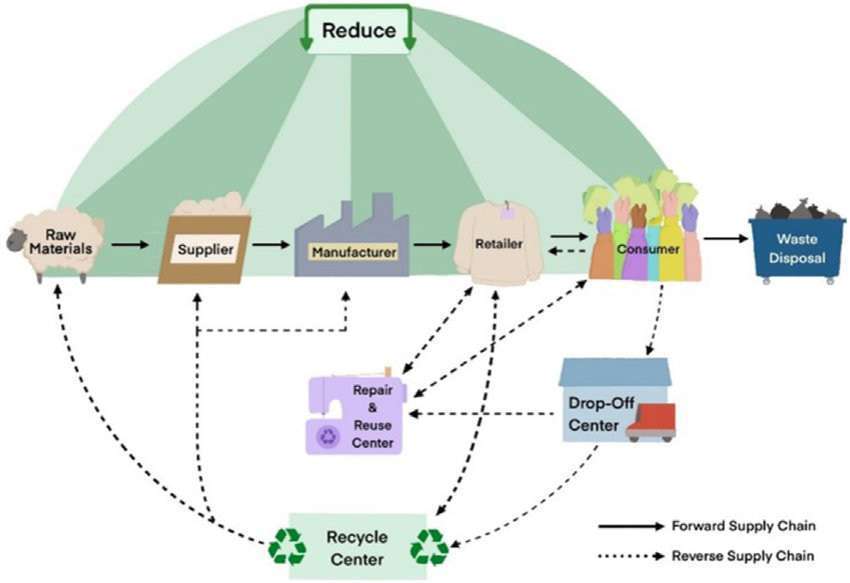
- Marine Life Revival Innovations – We will discuss one of several innovative technologies and designs to enhance biodiversity and restore marine life in coastal cities in an effort to mitigate the environmental impact of urbanization on a marine ecosystem. We will try to come up with a detailed discussion in this regard very soon and that discussion will be environment friendly solution and scientific. A technique for coastal protection known as “Living Seawalls” combines ecological concepts into the construction of seawalls. Ordinary seawalls provide little to no habitat for marine life since they are often flat and featureless. On the other hand, Living Seawalls are made using elements that mimic real coastal environments, such as cracks, rock pools, and other complex structures that serve as homes for a range of marine life.

- Tree-Based Batteries – Eco-Business presents the best sustainability innovations from another challenging, pandemic-stricken year when humanity needed answers, including lab-grown wood to underwear made from remaining milk. The most common non-renewable material for the anode in lithium-ion batteries is synthetic graphite. Stora Enso, a finish paper and pulp manufacturer, claims that lignin—a strong chemical present in tree cells and bark—can be used in place of synthetic graphite in batteries used in laptops, cell phones, and electric cars.
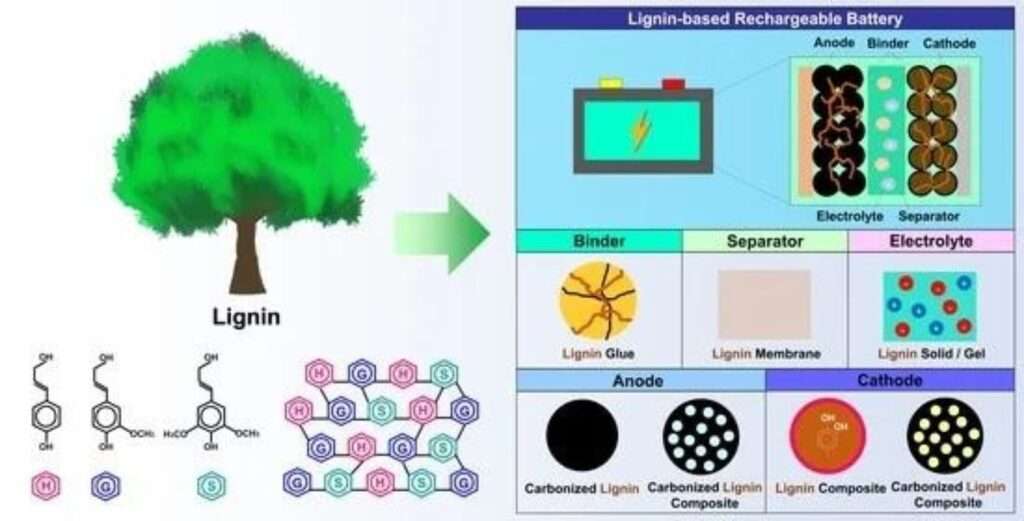
- Solar Generators for Home Energy From STRASBOURG, Feb 07 (AFP) EU on Tuesday urged a 90 percent cut to its greenhouse gas emissions by 2040. EU Climate Commissioner Wopke Hoekstra said, “We are recommending that the 2040 target should be a 90% emission cut” compared to 1990s levels based on the best available knowledge and a thorough impact study. As the EU works to become carbon neutral by 2050, he urged for a “fair transformation that will still allow businesses to thrive” and guarantee that “nobody is left behind.” This declaration occurred with hundreds of farmers staging a demonstration in front of the EU parliament building. They were upset about their perceived excessive environmental laws, rising expenses, and declining wages. The 27-nation European Union is already aiming to reduce greenhouse gas emissions by 55% by 2030 as an intermediate goal.” We just wanted to know how important solar energy usage is at every household and individual level today. And how the Western world is simplifying its laws and setting its direction considering this importance. Let us examine a working model for a portable solar power generator that fits 3 kW of solar panels into the walls of a covered vehicle. A battery bank, a charge controller, an inverter, and convenient electrical connections are all located within.
- Sustainable Agricultural Techniques – Sustainable agriculture is a method of farming without harming the soil or using harmful chemicals. If you have a garden and grow vegetables in that garden, instead of using chemicals that are harmful to the soil and the surrounding environment, you can plant some flowering plants that bugs don’t like. Or a natural spray made of garlic and neem oil can be used to repel pests. Let’s take a look at the essence of a movement against the use of pesticides by farmers that has recently taken place in the Western world. According to STRASBOURG/BRUSSELS, “Brussels will abandon a plan to support the use of pesticides, a further yield to farmers’ protests that have alarmed EU leaders and a setback to the EU’s environmental agenda.” A key component of von der Leyen’s platform to win support for her election as commission president in 2019 was her green agenda. However, the opposition to its execution has grown stronger because of the inflation and high energy costs brought on by Russia’s aggression against Ukraine, hurting her expected candidacy for a second five-year term leading the EU executive. In a speech to the Europeans, Ven der Leyen said that the commission had put out the proposal to reduce the use of pesticides with the admirable goal of lowering the hazards of chemical plant protection goods. On the announcement, shares of Bayer, the largest pesticide manufacturer in the EU, increased by 2%. The decision is the most recent reversal of the EU’s green strategy, brought about by massive farmer objections. Demonstrations by agricultural groups have become increasingly disruptive in recent weeks, spreading across several EU member states including Germany, France, Belgium, Poland, and Romania.”
You should know that we always take all the information from our team’s experience and reliable information from the entire internet. In this segment, we are giving you a small example of a sustainable eco-friendly farming system at this stage.
- Shipping Container Homes and Are Shipping Container Homes Worth It? – Well yes shipping container is everywhere and it is relatively cheap. And it’s proved very helpful for some strong reasons. But we will also focus on are shipping container homes are worth it shortly. As it is nature’s innocence, it’s cheap and it is movable. As we see The Ukrainian refugee containers are not repurposed shipping containers. They are specifically made for this purpose. They were used in Europe also as vaccination and COVID test centers. You just lay them somewhere in the parking lot and voila you have a covid center. That said, they are actually affordable because from day one they are made for their purpose instead of renovated and adjusted. But as my reader already understands we bring the latest trends and resources also. Throughout spending some time, we realize that a trend is also on this surface called Are shipping container homes worth it? Living in a shipping container home can be an exciting and unique experience. However, as with any type of living arrangement, there are always pros and cons. In this blog, we will discuss five things that we wish we had known before moving into our shipping container home.
- No Room for Guests
- Structural Issues
- Storage and Downsizing
- Receiving Cell Phone and Wi-Fi Signals
- Personal Space
Architects Belinda Carr and Mark Hogan provide their insights on shipping container homes. Carr, who has a popular YouTube channel focusing on architectural topics, believes that shipping container homes are overrated. She argues that they do not effectively address the issue of low-cost housing. Hogan, on the other hand, acknowledges the appeal of shipping container homes but emphasizes the challenges involved. He points out the need for naivety and arrogance to undertake such a project and warns that it requires more work and money than initially expected. We will bring more detailed observations into this topic if my reader wants and contact us.
- Industrial Waste to Fragrance and Flavors – In a recent study we found that the National Library of Medicine is a research institution in the United States that deals with biotechnology information naturally. So what we found there was that they came up with a method to convert biomass into a valuable product that could be used to make natural fragrances. If we want to make perfume from waste, there are a few things that we need to follow first, such as waste collection, waste sorting, and processing. These steps are the basic framework for converting this industrial waste into aromatics. For circular economy reasons, this move is part of a concept of making fragrances from waste, which aims to save the environment by reducing waste and ensuring maximum use of these resources. Let us try to understand this a little better with an image.
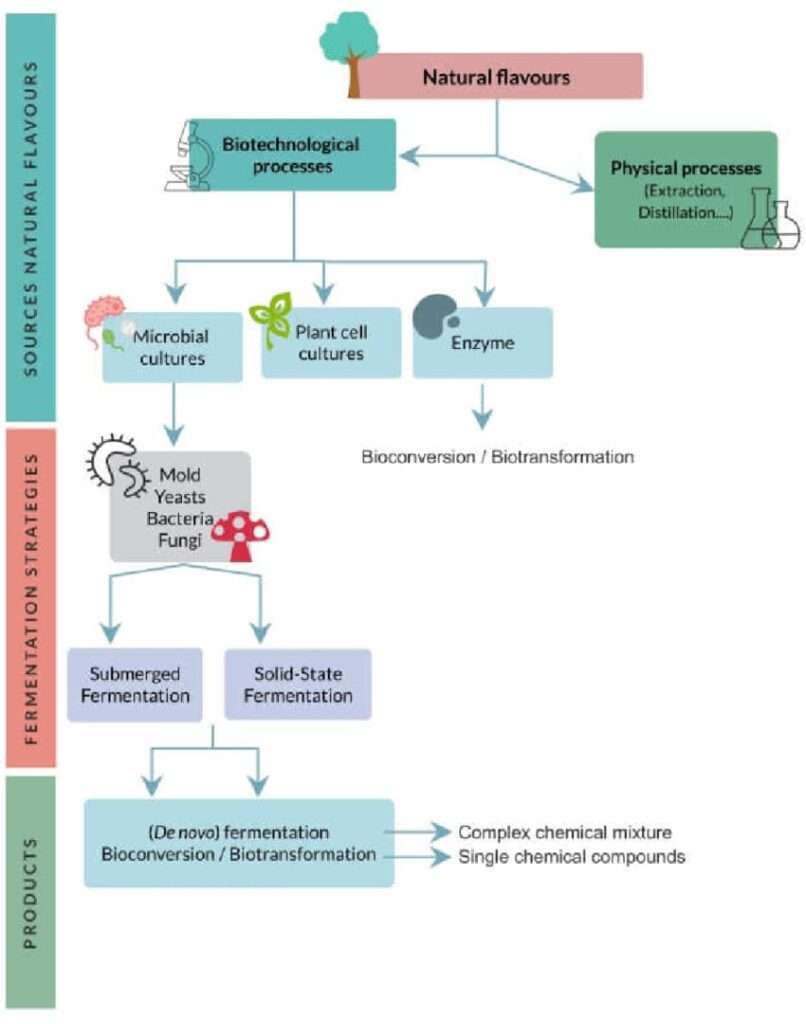
- Waterless Beauty Products – When it comes to being conscious about our impact on the environment, beauty brands are joining the movement to start doing their part to help create a cleaner and safer world for all of us. Today, we’re breaking down the top product picks for sustainable and responsible beauty that will not only make you look and feel great but benefit our planet as well. Sustainability in beauty means making conscious decisions about all our business operations to minimize our impact on the environment. This includes using water responsibly and reducing fuel emissions. By using products that are sans water, we can save on water resources and reduce our environmental footprint. Most skincare, makeup, and hair care products contain a significant amount of water, which is used as a base or filler. However, there are now water-free formulas available in the market. These goods are available as powders that need water to react. For example, there are water-free body washes and shampoos that only require a small amount of water to create a lather. By opting for water-free formulas, we can save water and reduce our overall consumption. The types of products we use can convert water levels into eco-friendly products are,
- Water-Free Body Wash
- Water-Free Shampoo
- Water-Free Body Lotion
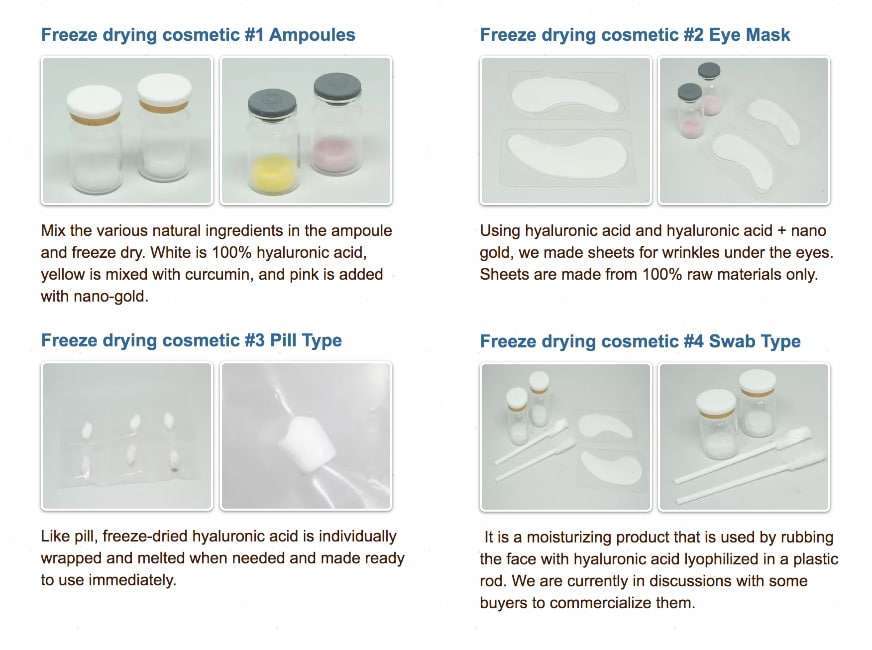
- How cities like Barcelona are implementing solar panels on pathways to generate clean energy – Barcelona, like many cities around the world, has long strived to achieve its sustainability goals, including reaching zero carbon emissions. In line with that, they have been working for a long time to target their rural population towards a zero-carbon mix and also to make it sustainable. One such initiative that emerged in our recent research is that they are building photovoltaic sidewalks that they hope will bring total carbon emissions to zero by 2050. What we found under this project is that they are trying to bring solar panels to the ground level instead of just using moon-based solar panels.
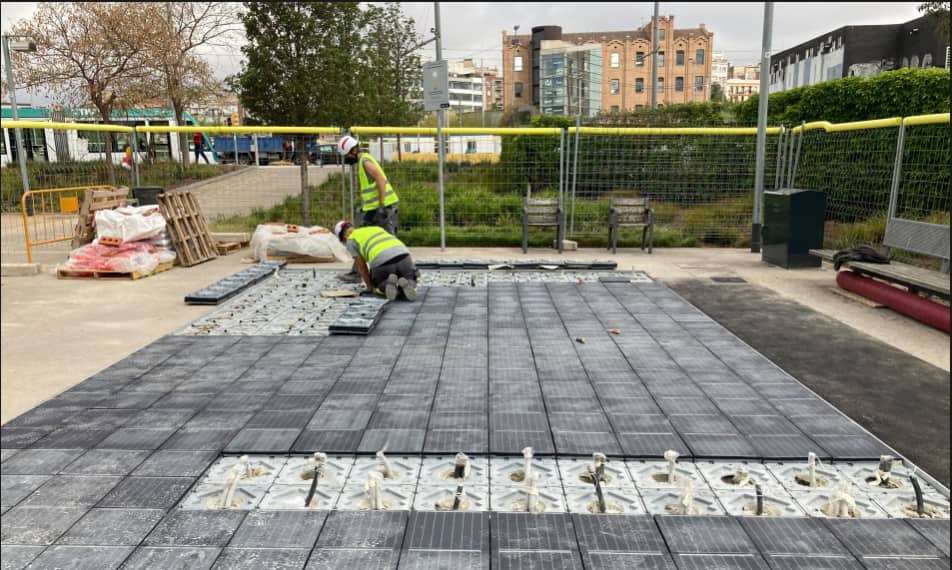
- Composting programs for organic waste, especially in the food industry – Especially in business if we use composting programs usually in the food industry it helps us achieve a goal that is better for the environment and our health. Let’s see how they can help us, we have tried to highlight them in point form.
- Environmental Benefits 2. Economic Benefits
|
|
- Engaging Employees in Sustainability – Employee participation in sustainability projects means understanding the goals and benefits of the company’s sustainability projects and engaging directly with them. This involves including sustainable practices in the company’s everyday operations and motivating staff members to take actions that support social responsibility, protecting the environment, and financial stability. The overall Plans for Every Kind of Business,
- Invest in Office Plants
- Support Local Eco-Conscious Businesses
- Encourage Renewable Energy
- Conduct Sustainability Training
- Create Systems and Processes
- Employee Surveys and Feedback
- Avoid Greenwashing
- Commit to Transformational Change
- Employee Resource Groups
- Employee-Led Initiatives
- Green Credentials for Businesses
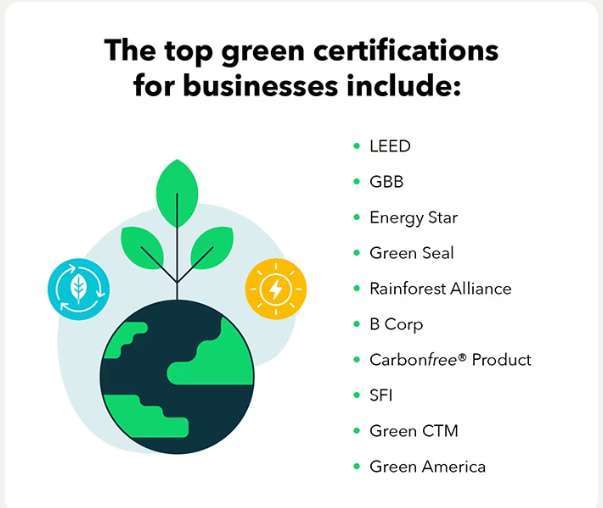
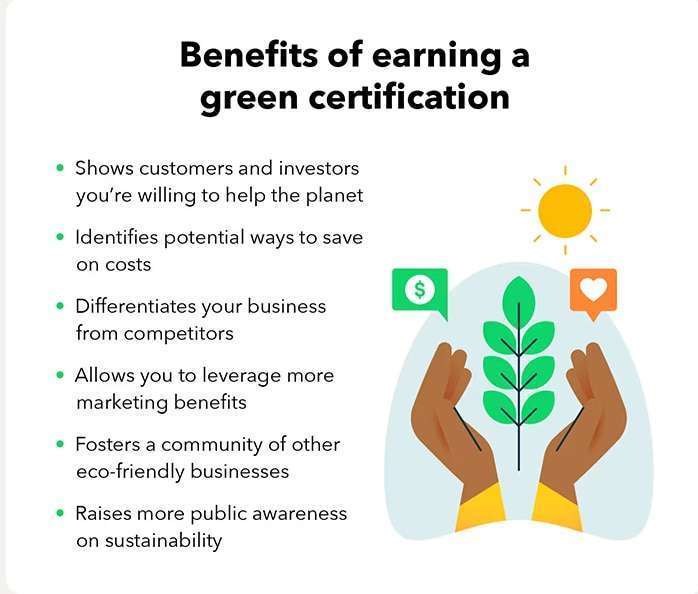
- What is Vertical Farming – In this section we will know what is vertical farming and how vertical farming works. Half of the world’s population now lives in cities, and this number is expected to rise to 70% in the next 50 years. As cities continue to grow, they face a significant challenge in terms of food supply. With an increasing demand for food, cities are depleting resources from the countryside and producing pollution and waste. This is where vertical urban farms come into play with vertical farming initiatives.
- Green House Roofing and Its Impact on Urban Heat Islands – It has massive benefits of reducing urban heat and improving air quality. The Layers of a Green House Roofing, It’s not just about plants and flowers; it’s an intricate composition of different layers, each serving a crucial function. The topmost layer of a green roof is the growing medium. This layer nurtures the green life by providing the soil and nutrients needed for plants to thrive. It acts as a foundation for the plants and ensures their healthy growth. Below the growing medium lies the filter membrane. This layer serves as a barrier that prevents the finer particles of the growing medium from infiltrating the lower layers. However, it allows water to pass through, ensuring proper drainage. Support panels lend structural strength to the whole assembly of a green roof. They provide the necessary support for the layers above and ensure the stability of the roof. Without support panels, the green roof would not be able to withstand external forces. Below the support panels, there is the thermal insulation layer. This layer plays a vital role in reducing heat exchange. It helps in the temperature regulation of the building below the green roof. By minimizing heat transfer, the thermal insulation layer contributes to energy efficiency. The vapor control layer is responsible for protecting the roof structure from potential moisture damage. It acts as a barrier against moisture, preventing it from seeping into the layers below. This layer ensures the long-term durability of the green roof. Finally, the roof itself provides the solid base for the entire composition of a greenhouse roofing. It acts as a foundation for all the layers and ensures the overall stability and integrity of the green roof structure.
- Increasing Environmental Awareness through Education – In this blog, we delve into the topic of environmental or eco-friendly oppression and its impact on marginalized communities. Specifically, we explore the story of Reading, Pennsylvania, a city plagued by pollution and its lasting effects on its residents. We also discuss the broader issue of environmental racism, highlighting the disparities faced by black and brown communities across the United States. We will also demonstrate the importance of creating inclusive spaces for all individuals to connect with nature. Reading, Pennsylvania, once a thriving manufacturing hub, faced a significant decline due to the 1893 Panic. Over the years, the city witnessed the rise of pollution sources such as Exide Technologies and Crompton Knowles. The contamination of soil with lead and the use of synthetic dyes containing cancer-linked derivatives in textile factories severely impacted the health of the local community, particularly black and brown families. Communities of color across the country face similar challenges. The Flint water crisis, where contaminated drinking water affected a predominantly African-American population, and the Tennessee Valley coal ash incident, which exposed 90% of the African-American community to hazardous waste, are just a few examples. Studies reveal that black and brown communities are more likely to suffer from asthma, live near toxic waste sites, and have contaminated drinking water. These statistics highlight the long-standing issue of environmental racism that continues to persist. Arvelyn Hill, an outdoor educator, shares her journey and the impact of nature on her life. Arvelyn’s career at the New York Botanical Garden has allowed her to make a difference in the lives of children. Through various programs and initiatives, such as the Edible Academy and Everett’s Children’s Adventure Garden, the Botanical Garden educates kids about the value of green spaces, nutritious foods, and the wonders of nature. The institution also plays a crucial role in providing free access to its visitors, particularly those residing in the South Bronx, an area heavily impacted by environmental racism. The “Plants as Liberation” series at the Botanical Garden showcases the diversity of careers in the outdoor education field. Providing scholarships to aspiring black farmers, the series aims to raise environmental awareness and promote environmental equity. The New York Botanical Garden’s commitment to inclusive outdoor education demonstrates the importance of representation and fostering a sense of belonging in nature. By empowering youth and advocating for environmental equity, we can work towards a more just and sustainable future. Let us continue to appreciate and protect our natural environment for generations to come.
- Eco-Friendly School Projects for Children – In today’s world, where climate change, deforestation, and pollution pose significant challenges, it is crucial for schools and universities to lead the way in educating and empowering future generations to take action for a greener and more sustainable future. One remarkable example is the Green School in Bali, which opened its doors in 2008 with a mere 90 students. Nestled amidst rice paddies and three volcanoes, this school has become a pioneer in sustainability education. The Green School offers children a unique opportunity to learn from and connect with the natural environment that surrounds them. Students grow their own food, study within the domes of the world’s largest bamboo structure, and actively engage with the land and the local community. In Copenhagen, Denmark, the Copenhagen International School has been designed to serve as an educational tool in itself. The school’s block-shaped building was inspired by nearby shipping containers, while the arrangement of solar panels mimics a water reflection from the sea. Covering an impressive 25,000 square meters, the school accommodates 1,200 students and 280 employees. What sets this school apart is its integration of solar panels into the building’s design. With 12,000 solar panels installed, the school generates over half of its annual energy needs through solar power. Situated on the beautiful island of Oahu in Hawaii, Punahou School has been imparting knowledge and fostering responsible citizenship for over 180 years. Spanning over 76 acres of lush Hawaiian land, the school has incorporated sustainability into its construction and curriculum, aiming to be net zero by 2025. As we face the pressing challenges of climate change and environmental degradation, it is essential for more schools to adopt eco-friendly practices. While budget constraints may limit the ability to adapt infrastructure entirely, incorporating sustainable education into the curriculum is a cost-effective and comparatively simple solution. We must advocate for environmental education to become an integral part of every child’s learning experience, inspiring school boards and governments to prioritize sustainability.
- How sustainable urban planning and design are reshaping cities for a greener future – Modular floating communities, towering skyscrapers covered in trees, and zero-carbon smart cities. These are some examples of what are known as climatopias. It’s a term coined to describe utopian urban designs that seek to address climate change. Architects and designers around the world are envisioning these futuristic settlements to create sustainable urban environments in the face of mounting environmental threats. While designing for climate change is crucial, it’s equally important to consider the role of people in cities. What truly makes a city sustainable? Strong communities are key to guiding and addressing the challenges that arise from living in high-density areas. Environmental planning is an interdisciplinary field that incorporates urban planning, geography, economics, and agriculture. Its primary goal is to build sustainable communities that offer better living, working, and recreational environments. This involves responsible use of natural resources, promoting economic opportunities, ensuring environmental justice, and providing social equity.
- Eco-Friendly Packaging Innovations – Imagine being tasked with the challenge of reinventing packaging materials to be 100% recyclable and circular, with no more single-use products. Now imagine having just five years to make it happen. Although it can seem like an impossible task, it is both affordable and achievable with the correct resources and attitude. In the quickly evolving world of today, sustainability has come to be a top concern for businesses in all sectors. With the mounting pressure to reduce waste and minimize environmental impact, businesses are seeking innovative solutions to transform their operations. Enter the virtual twin, powered by the 3D Experience platform. This cutting-edge technology enables companies to simulate and visualize their products and processes in a virtual world. It provides a collaborative space where teams can come together to imagine, test, and qualify ideas faster than ever before But how does simulation contribute to sustainable transformation? The answer lies in its ability to accelerate innovation, simplify complexity, and optimize every phase of a product’s life cycle. The virtual world serves as a launch for genuine outcomes rather than just an endless supply of possibilities. By leveraging simulation tools and the 3D Experience platform, companies can imagine, test, and improve their sustainable innovations before making them a reality. Imagine a world where packaging materials are truly recyclable and circular, where single-use products are a thing of the past. We can achieve this future, but it will need courage, revolution, and change. It requires reimagining the way we work and embracing the power of simulation. Together, we can build a more sustainable future.
- Sustainable Tourism Practices – Greta Thunberg, an environmental activist, gained popularity in 2019 when she took a sailboat to New York for a United Nations climate summit. Her decision to avoid air travel and reduce her carbon footprint sparked a movement known as flight shame or “fleek scam.” Since then, the travel industry has seen a significant shift towards more sustainable practices. In this article, we will explore the concept of green travel, its importance, and how the industry is adapting to meet the growing demand for sustainable options. Green travel, also known as sustainable travel, refers to minimizing one’s negative impact on the environment, contributing to local economies, and creating a positive social impact while traveling. Sustainable travelers can reduce their environmental impact by opting for eco-friendly transportation methods such as taking a train instead of a plane, conserving water and energy, and paying for carbon offsets to compensate for their emissions. Another important aspect of green travel is supporting the local economy. Travelers can choose to stay at locally-owned hotels or accommodations and opt for small local touring companies. By doing so, tourism can benefit the communities directly, creating job opportunities and driving economic growth. Travelers can also make a positive social impact by donating to local charities and volunteering to improve the places they visit. According to a survey conducted by Booking.com in 2021, 46% of travelers stated that the pandemic influenced them to travel more sustainably. Making sustainable decisions is difficult for many visitors, however, mostly because they are unaware of the possibilities that are accessible. When combined, even small changes may have a big impact on lowering carbon emissions.
- Conservation Efforts in Wildlife Habitats – Habitat conservation is a critical aspect of landscape architecture as it plays a vital role in preserving and protecting our natural environment. As we continue to expand and develop our cities and towns, it becomes increasingly important to consider the impact of our actions on local wildlife populations. Designing landscapes that cater to the needs of local wildlife species, including their habitat requirements and migration patterns, is crucial. Landscape designers should keep the demands of the local animal species in mind while creating their designs. This involves creating green areas that provide animals access to water, food, and shelter. Using native plants in landscape designs is one efficient approach to do this. Native plants promote an area’s general health and biodiversity in addition to giving nearby animal species food and safety. Landscape architects can also contribute to habitat conservation by designing landscapes that are sustainable and environmentally friendly. Urban development’s negative effects on the environment may be reduced by implementing strategies like green roofs and rainwater collection. In addition to providing advantages to the local wildlife population, designing landscapes with wildlife in mind also results in a more sustainable and healthy environment for humans and animals. By providing food, shelter, and water for wildlife, landscape architects contribute to the overall biodiversity and ecological balance of an area.
- Eco-Friendly Fashion and Textiles – There is an increasing awareness and interest in sustainable fashion and sewing, as more and more people choose to make eco-friendly choices in their clothing and fabric purchases. Contrary to popular belief, there is no such thing as a completely sustainable fabric. Every piece of fabric comes at a cost to the planet, whether it’s in the form of water usage, pesticides, or energy consumption. However, there are fabrics that are more sustainable than others, and by making conscious choices, so we can minimize our impact on the environment. Cotton, a fluffy plant-based fabric, is considered one of the most sustainable fabrics. It is 100% biodegradable, meaning it naturally decomposes once it reaches the end of its life cycle. There are different types of cotton available, including traditional cotton, organic cotton, and recycled cotton. Among these, recycled cotton is the most sustainable option as it reduces water and pesticide usage and repurposes existing garments, preventing them from ending up in landfills. Hemp is a fabric derived from a plant that is often misunderstood due to its association with marijuana. However, hemp itself is not marijuana and is considered marijuana’s sober sister. It is 100% biodegradable and requires significantly less water compared to cotton. One kilogram of hemp only requires 500 liters of water. The linen plant is the source of linen, which is another option for eco-friendly fabric. Similar to hemp, linen grows with no need for pesticides or water and is 100% biodegradable. There is no trash left behind once the whole plant is utilized. Tencel Lyocell, commonly known as Tencel, is a fabric that is not as sustainable as linen or recycled cotton but is still considered relatively eco-friendly. Tencel production requires significant energy as it involves multiple steps, including chopping up trees, dissolving with the particles, spinning them into yarn, and weaving the fabric. Wool, a fiber obtained from sheep, is a natural and biodegradable fabric. It is known for its durability and longevity, with woolen items lasting for decades. The process of turning sheep fleece into wool is relatively straightforward, involving shearing, washing, spinning, and either knitting or weaving. Learning about sustainable fabric choices empowers us to make informed decisions when it comes to purchasing clothing or fabric for sewing projects. While no fabric is entirely sustainable, we can choose fabrics like recycled cotton, hemp, linen, Tencel, and wool that have a lower environmental impact.
- Advancements in Energy Efficiency – Modern life heavily relies on energy, but the current sources of energy, which are predominantly fossil fuels, pose a threat to the environment due to the emission of greenhouse gases. To combat the catastrophic effects of climate change, it is crucial to shift towards alternative and sustainable sources of energy. Hydroelectric power, wind, and solar energy are examples of renewable energy that are essential to this shift. The answer is straightforward when it comes to renewables: the more, the better. It’s crucial to remember that there are other low-carbon energy sources than renewables. The ultimate goal is to achieve a zero-carbon energy system or find ways to have a net negative greenhouse gas impact. Nuclear power, despite its controversy, can contribute to a carbon-free future. Additionally, advancements in technology may lead to the discovery of new forms of energy that can have negative emissions, albeit at a higher cost. Nuclear power, often touted as a clean energy source, faces political obstacles rather than technological or economic ones. Anti-nuclear movements, triggered by incidents like Fukushima, Chornobyl, and Three Mile Island, have influenced the public perception of nuclear energy. Despite its potential as a virtually zero-carbon power source, the opposition to nuclear power has hindered its widespread adoption. Overcoming these challenges and increasing nuclear power’s share in global electricity production would greatly contribute to the reduction of greenhouse gas emissions. Theoretical calculations suggest that all of humanity’s energy needs could be met by solar power within a few hours. However, practical limitations hinder the widespread adoption of this abundant energy source. The conversion, capture, and distribution of solar energy suffer from significant inefficiencies. The goal of ongoing research is to increase solar panel efficiency by using better chemicals and materials. Interest in biofuels as a possible replacement for fossil fuels has grown. But their influence isn’t that great. Studies have shown concerns regarding the trade-off between using agricultural land for food production versus growing crops for energy. Switching to electric vehicles (EVs) is a step towards a sustainable future. However, the source of power needed to charge EVs determines their actual effect. The environmental advantages are reduced if coal or other non-renewable energy sources account for the majority of the power produced. Energy usage is significantly impacted by heating and cooling systems. Countries like Britain have housing stocks with poor energy efficiency, which is a widespread problem worldwide. By embracing renewable energy, improving the efficiency of existing technologies, and adopting sustainable practices in various sectors, we can pave the way for a greener future.
- Shift from Net-Zero to Carbon-Negative Targets – These terms are often used interchangeably, but it’s important to understand that they have distinct differences. Both carbon neutrality and Net Zero revolve around the idea of balancing emissions output from an organization or operation. However, the key factor that sets them apart is the use of compensated emissions, commonly known as offsets. Carbon neutrality allows organizations to measure their emissions and then purchase offsets to balance the impact of their own emissions outputs. This approach provides a great starting point for companies to have an immediate impact on the environment. Net Zero, on the other hand, is governed by a real standard set by the Science-based Targets Institute. To achieve Net Zero, organizations must meet specific requirements. These requirements include emissions reductions across scope one, two, and three by ninety percent. Unlike carbon neutrality, Net Zero does not allow the use of offsets to balance emissions. Instead, it requires deep reductions in emissions through various means such as Renewable Energy Efficiency projects and electrification.
- Advanced Technologies Supporting Decarbonization – In the modern era, almost everything we use in our daily lives is built around the use of fossil fuels. From transportation to manufacturing to energy production, our reliance on fossil fuels has led to significant carbon emissions and environmental degradation. However, if we want to create a livable future, we need to decarbonize every aspect of our economy. One crucial step towards decarbonization is transforming the world’s energy system. This means shifting away from traditional fossil fuel-based power generation and embracing renewable energy sources like wind and solar. When it comes to electricity, many of us take it for granted without considering its source. The regions with the highest potential for wind and solar energy production often have low population densities. To tap into these renewable resources, we need to build long-distance transmission lines with high-voltage capabilities. This enables us to transport energy efficiently from remote locations to areas of high demand. Renewable energy sources are not constant. The availability of wind and sunlight varies throughout the day and across different regions. To ensure a stable energy supply, we need to develop interconnected supergrids that span states and even countries. The aviation industry is another major contributor to carbon emissions, accounting for over 2% of global emissions. As demand for air travel continues to grow, it becomes imperative to find sustainable alternatives. Decarbonization efforts also extend to our homes and buildings, which heavily rely on fossil fuels for heating, cooling, and electricity. Carbon emissions may be greatly decreased in residential and business settings by using sustainable techniques. A significant amount of energy use and emissions come from commercial buildings like stores and offices. In cities like New York, where large-scale commercial spaces are abundant, reducing carbon footprint becomes crucial. New York City has implemented major emissions reduction policies for its largest buildings. From electrical grids to aviation to residential and commercial spaces, the path to a sustainable future requires collective effort and innovative solutions. Decarbonizing our economy is a monumental task, but by starting small and addressing individual sectors, we can make significant progress.
- If we don’t start then what we need to face – Climate change is one of the most pressing issues of our time. The greenhouse gases we release into the atmosphere are causing the planet to heat up at an alarming rate. Scientists have warned that global temperatures must not rise by more than 1.5 degrees Celsius if we want to avoid the worst impacts of climate change. Protests, extreme weather events, and calls for action have brought climate change to the forefront of global discussions. But what exactly is climate change? Throughout history, our planet’s climate has undergone significant changes, including alternating between ice ages and warmer periods. Earth has experienced at least five major ice ages, with the most recent one ending nearly 12,000 years ago. The rise in Earth’s average temperature, commonly known as global warming, is primarily caused by the increase in greenhouse gas emissions from human activities. While greenhouse gases occur naturally on our planet, activities such as burning fossil fuels, deforestation, agriculture, and waste decomposition have significantly augmented their presence. Another consequence of rising temperatures is the warming and faster evaporation of oceans, which increases the occurrence of severe storms and heavy rainfall. Global warming intensifies weather extremes, including longer droughts, heatwaves, and wildfires. The loss of soil moisture during droughts exacerbates the risk of wildfires, while the high temperatures impact both land and ocean ecosystems. Animals are forced to migrate to survive, while others lose their habitats and face extinction.
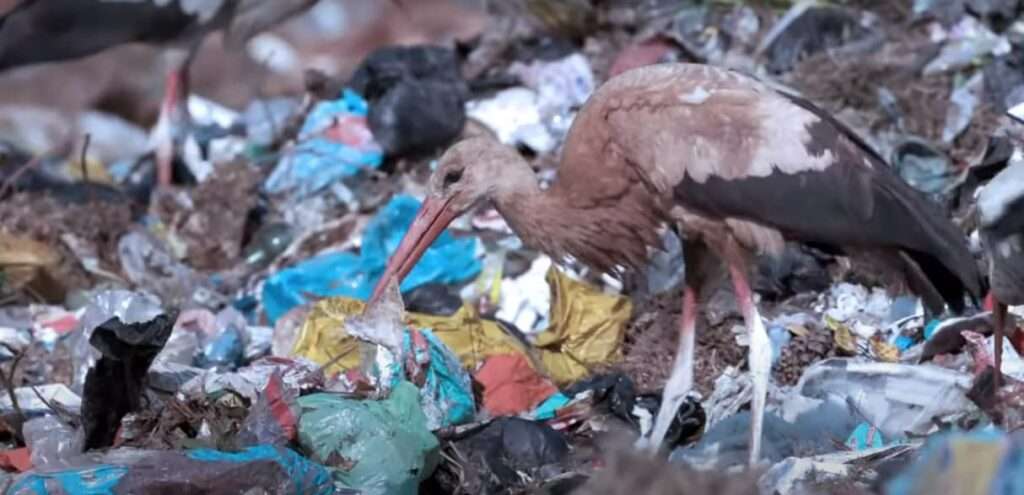

However, if we fail to take immediate action to reduce our emissions, temperatures will rise far beyond this threshold, leading to significant changes in our environment and way of life. While climate change poses a great threat, the ocean can play a crucial role in mitigating its effects. The ocean acts as a regulator for our atmosphere, absorbing 93% of the heat caused by our emissions and over 25% of our excess carbon. Having said that, our ocean is currently facing immense challenges. It is getting hotter, rising higher, and becoming more acidic as the planet continues to heat up. A recent study conducted by the high-level panel for a sustainable ocean economy, which consists of 14 Heads of Government and various experts, has found that the ocean may hold the key to its own survival and ours. The study presents a series of ocean solutions that could reduce emissions by 1/5th of the amount needed to limit global temperature rise. To put this in context, putting these ideas into practice would be the same as taking 2.5 billion automobiles off the road annually. While climate change has reached unprecedented levels, the actions we take today can shape the future of our planet. To lessen the consequences of climate change, communities everywhere have to adopt sustainable practices and make ecologically beneficial decisions. Some significant solutions include transitioning from burning fossil fuels to renewable energy sources like solar, hydroelectric, and wind power, reducing emissions from industries and transportation through green technologies, and limiting deforestation by implementing more space-efficient forms of agriculture, such as vertical farming. Communities around the world are coming together to innovate and engineer solutions for climate change. Some remarkable examples include Bhutan, the world’s most carbon-negative country, Costa Rica’s achievement of 99% renewable energy, and China’s position as the leader in wind power. Climate change is undeniably a global issue, and the future of our planet relies on the choices we make today. To solve this pressing issue, collaboration between people, communities, and governments is essential.
- Eco-psychology – It has a profound impact on numerous aspects of our lives, including the military, business, education, sports, and more. This article will provide an overview of how psychology is applied in these areas, with a specific focus on environmental psychology. One of the subfields within applied psychology is environmental psychology. It examines the intricate relationship between humans and their environment, including nature, thoughts, attitudes, and causes. Environmental psychology encompasses various avenues, some of which intersect with behavioral psychology. A key aspect of environmental psychology is the exploration of behavioral modifications. By leveraging reinforcement, rewards, and punishments, psychologists aim to guide our behavior toward more environmentally friendly practices. In Canada, environmental psychologists frequently conduct studies in universities. These studies involve the placement of reminders in public washrooms to promote environmentally friendly actions, such as turning off taps and lights. Another facet of environmental psychology focuses on the positive effects of the environment on our health. This branch is often referred to as eco-psychology. Eco-psychology explores the psychological impact of different environments, comparing experiences in urban settings to those in natural, rural settings. Studies show that engaging with nature has a profound impact on our well-being. For example, if you go for a walk or a jog in a busy urban street surrounded by skyscrapers, traffic, and noise pollution, your stress levels are likely to increase. Researchers in the field of neuroscience have discovered that being near bodies of water, such as saltwater or freshwater, has a particularly calming effect. This may explain why real estate and urban planning often prioritize proximity to water. Water-related activities, such as water sports or spending time at the beach, are also popular choices for relaxation and stress reduction. Environmental psychology is just one facet of applied psychology that highlights the vast reach of this discipline. Its impact extends far beyond the realms of research and clinical practice. By delving into the field of applied psychology, we gain a deeper understanding of how psychology shapes various aspects of our lives, including the military, business, education, sports, and the environment.
- Challenges of Recycling Rare Materials – we will explore the fascinating world of e-waste and the innovative ways it can be reduced and recycled. E-waste, or electronic waste, refers to discarded electronic devices such as computers, smartphones, and solar panels. While many people are unaware of the risks associated with e-waste, there are individuals and organizations working towards salvaging raw materials, reducing toxic emissions, and creating sustainable solutions. When we buy new tech, we often throw out the old without considering its potential value. However, e-waste can contain hidden treasures if we know where to look. Modules that would typically be discarded can actually be salvaged, with a potential recovery rate of up to 70 percent. By recovering raw materials from e-waste, we can reduce the need for new resources and minimize the release of toxic fumes in the recycling process. Unfortunately, many people are not aware of the risks associated with e-waste. Hazardous waste from electronic devices is often dismantled in unsafe conditions, exposing workers and their families to toxic substances. In India, for example, there is a thriving but informal e-waste industry where workers risk their health for a living. You can even contribute to the energy transition from the comfort of your own home. In Hamburg, Germany, renewable power plants are being installed on private balconies using used solar modules. The potential of secondhand solar modules goes beyond individual balcony power plants. Engineer Martin Wilke has dedicated himself to recycling old photovoltaic panels and finding buyers for them. Through organizations like the SoliSolar Association, Wilke helps people assemble balcony power plants and connect them to the grid, generating up to 600 watts of power. The issue of e-waste extends beyond individual devices and modules. In India, Swiss entrepreneur Dea Wehrli is working towards creating a safe space for workers to dismantle hazardous waste. The EcoWork project aims to improve the working conditions of e-waste dismantlers in Delhi, where e-waste is often taken apart in neighborhoods, exposing children and families to toxic substances. Common, a cooperative based in France, is promoting sustainable electronics through a unique business model focused on renting rather than selling devices. By renting out electronic devices, such as smartphones and computers, Common aims to reduce overproduction and encourage manufacturers to prioritize durability. E-waste is a growing concern worldwide, but it also presents opportunities for sustainable practices. By salvaging, reusing, and recycling electronic devices, we can reduce the environmental impact of our technological consumption. Initiatives such as balcony power plants, safe working conditions for e-waste dismantlers, and sustainable electronics rental are steps towards a more sustainable future.
What are eco-friendly products?
Eco-friendly products are defined as products designed with consideration for the environment. Such products are normally designed in a way that minimizes the creation of waste, the creation of a carbon footprint, and avoids as many harmful byproducts and chemicals as possible. These could be biodegradable packaging, reusable shopping bags, solar-powered products, or even food organically produced.
Let us have a talk about thinking of clothing that is good to wear and sound to wash in detergents that won’t harm the earth. Imagine giving gifts that make the person receiving them happy and our environment. Envision using packaging and straws that don’t pollute our oceans. Picture cleaning your home with products that leave it sparkling without leaving a toxic residue. Consider the peace of mind that comes from managing pests without harming any wildlife. Dream of a house that shelters eco-friendly souls and quenches your thirst without adding to the plastic plague. Each decision you make brings us closer to a sustainable world.
- Best Eco-friendly laundry detergent – When it comes to doing laundry, we all want our clothes and bedding to come out fresh and clean. But have you ever stopped to think about the impact your laundry detergent has on the environment? Many of the top brands now offer greener options, allowing you to skip the chemicals and opt for natural, organic ingredients that are gentle on the planet and on sensitive skin. If you love the soothing scent of lavender, then Ecos Lavender Laundry Detergent with Conditioner is the perfect choice for you. This liquid detergent not only leaves your clothes clean and fresh at any temperature, but it also includes a built-in fabric conditioner, eliminating the need for a second plastic bottle. What sets Ecos apart is its commitment to the environment. It is free from planet-harming phosphates, dyes, and parabens, and it is biodegradable. Seventh Generation offers an ultra-concentrated laundry detergent that is fragrance-free and gentle on the planet. This liquid detergent comes in a compostable and recyclable cardboard bottle, ensuring minimal impact on the environment. It is formulated without dyes or artificial brighteners, using a tried and tested triple enzyme 96 plant-based formula. If you’re looking to save cash and ditch detergent altogether, the Eco-Friendly Laundry Ball might be the perfect solution for you. This impressively popular laundry ball can be simply popped into the washing machine without the need for any additional detergent. If you’re looking for a laundry liquid that smells sweetly of peony flowers, then Method’s Peony Blush Laundry Liquid is the perfect choice. A method is renowned for its commitment to green products and packaging design, making it the world’s only line of cradle-to-cradle certified cleaning products. This laundry liquid contains 95% natural and 98% biodegradable ingredients. Ecover’s Non-Bio Washing Powder is a winner of the Good Housekeeping Institute award for its exceptional cleaning power. This washing powder provides a fresh, naturally derived scent and comes in a cardboard box to minimize plastics. Ecover is a well-known name in the world of environmental cleaning products, and their Non-Bio Laundry Liquid is no exception. This concentrated liquid is naturally scented with lavender, sandalwood, and amber, creating a delightful fragrance for your freshly washed clothes. Faith in Nature offers a super-sized bottle of super-concentrated laundry liquid, giving you excellent value for your money. With 5 liters of detergent, you only need 20 milliliters for a decent wash. If you’ve ever been skeptical about laundry balls and eggs, it’s time to reconsider. The Eco Egg Multi-Use Laundry Egg provides three years of effective washing, costing just three pence per wash. Inside the eco egg are all-natural cleaning pellets that break down even tough dirt stains, such as blood and urine. Bio D’s Concentrated Non-Bio Washing Powder guarantees an exceptional clean while leaving your clothes smelling fresh. This washing powder is made from safe, natural ingredients that have a minimal impact on the environment.
- Eco-friendly gifts – Say goodbye to mundane eco-unfriendly presents and hello to a world where gifts come with a heart for the planet. Our list is more than just a guide; it’s an invitation to a celebration where eco-consciousness meets joyous giving. Picture this, your friend mixing up a storm with homemade cleaning solutions. It’s like a chemistry set, but greener and smells way better. We’re talking lemon-fresh, vinegar-sparkle, and a whole lot of eco-cred. Cleaning up can be so much fun—who knew? Imagine a day when dial-up internet is as useless as single-use plastic bags. Enter stylish, practical reusable bags that make every shopping trip an eco-fashion statement. You’re not just giving a bag, you’re gifting a trend. For the friend with the not-so-green thumb, these beginner-friendly plant seed kits are a game-changer. It’s like handing them a tiny personal forest. Gifting a solar charger is like giving the gift of unlimited power – sun power, that is. Perfect for the tech-savvy environmentalist who’s always on the go. It’s like saying “I care about you and the polar bears”. Wave goodbye to plastic wrap and say hello to the superstar of sustainable kitchens – biodegradable food wraps. These chic patterned wonders are on a mission to keep your eats fresh and your conscience cleaner. For the bookworm in your life, why not a tale that’s already been loved? Second-hand books and eBooks are the literary equivalent of a high-five to the planet. Plus, they come with a side of nostalgia and zero tree-cutting guilt. Introducing beauty products that are like a love letter to the environment. These eco-luxuries pamper your skin with nature’s finest, minus the harsh additives. Picture the joy when your loved one unwraps an appliance that’s a superhero of savings. It’s the gift that whispers “I care about you and our Earth”. Step aside fast fashion, here come threads with a cause. Each piece tells a story of transformation, from discarded to dazzling, ready to strut down the runway of sustainability. Unleash the inner artist with a gift that’s all about creativity and conservation. These DIY art kits are like opening a treasure chest of recyclable materials, inviting your special someone to craft their eco-masterpiece. It’s a double win for their art collection and the planet.
- Eco-friendly packaging – New sustainable packaging solutions are gaining popularity among corporations, fast-moving consumer goods manufacturers, and packaging suppliers. However, implementing sustainable packaging solutions is not a solo endeavor. It requires collaboration between various stakeholders, careful consideration of trade-offs, and leveraging technologies to achieve commercial viability and environmental efficiency. Clear communication is essential between product development, quality control, clients, suppliers, manufacturers, distributors, retailers, and end-users. When developing sustainable packaging solutions, it is important to consider material usage, energy, and waste, and maximize performance and functionality. For example, multi-layered pet flow wraps offer qualities such as stiffness, gloss, print protection, and heat resistance. Consumer perception is an important consideration in sustainable packaging. While sustainable packaging is often associated with higher product quality due to its naturalness, it can also affect the perceived aesthetic quality. When considering new sustainable options, organizations should stay ahead of regulations and start testing ideas, building prototypes, and collecting data. The International Safe Transit Association has developed sustainable packaging process guidelines that provide a rationale, metrics, and standardized processes for developing sustainable packaging. Technologies play a crucial role in achieving sustainable packaging solutions. It is reasonable to assume that new materials will have a lower supply and higher costs compared to traditional packaging materials.
- Eco-friendly cleaning products – Not all cleaning products are created equal. Some can hurt both the environment and our health, while others are designed to minimize their ecological footprint and protect our well-being. Eco-friendly cleaning products are cleaning solutions that are made using natural and sustainable ingredients. They are designed to minimize the environmental impact and protect your health. These products are often made using plant-based or biodegradable ingredients and are free from harsh chemicals, fragrances, and dyes. The benefits of using eco-friendly cleaning products are numerous. First and foremost, they are better for the environment. They are made using natural and sustainable ingredients that do not harm the ecosystem. Selecting environmentally friendly cleaning supplies will help you greatly lower your carbon footprint and improve the health of the earth. They don’t include harsh chemicals that might irritate skin or create difficulties with breathing, in contrast to non-eco-friendly items. They are thus an excellent option for sensitive people or homes with kids. Eco-friendly cleaning products have the greatest influence on the environment. They are produced using environmentally friendly, natural, and sustainable components.
- Eco-friendly pest control – The environmentally safe pest control methods are suitable for both your grass and your home. Natural pesticides provide less of a threat to animals, the environment, and marine life.
- Eco-friendly paper straws – Paper Straws are considered the best biodegradable straws available in the market. Although Martin Stone’s 1888 idea has stood the test of time, paper straws have been improved over the years. The primary justification for using paper straws rather than plastic ones is their biodegradable nature. This implies that it is degradable and won’t float about in our seas or be taken in by animals. Another approach is to use bamboo straws instead of biodegradable straws. Bamboo straws are generally reusable and can contribute to reducing the cost of buying straws. They work well in any drink and may be reused often. Grass straws were developed as a sustainable and green substitute for plastic straws. These are hay-based, disposable straws. PLA (poly lactic acid) straws, another name for biodegradable plastic straws, are manufactured from plant starches and oils, usually corn. Since they are formed of plants, the majority of these straws break down quickly in a professional recycling facility. Whether it’s paper straws, bamboo straws, hay straws, or biodegradable plastic straws, each option has its benefits and considerations.
- Eco-friendly homes – Imagine building your own home using natural materials like earth and straw. It may sound like a back-to-basics approach, but these earth-built or breathable houses are gaining popularity as an eco-friendly alternative to conventional homes. Located in Mošorin, Serbia, the Center for Earth Architecture is a group led by architect Dragana Kojičić. For the past ten years, they have been dedicated to reviving traditional earth-building techniques and teaching younger generations about this sustainable method. By using readily available natural materials and ancient building methods, Kojičić and her team are proving that earth-built homes are not just a thing of the past. Buildings alone contribute to nearly 40% of all human greenhouse gas emissions worldwide, with more than half of these emissions coming from our homes. We had the opportunity to visit a mud hut in Vojvodina, Serbia, made entirely of natural materials. As we stepped inside, the earthy smell and the rustic charm of the house greeted us. Dragana showed us how to make adobe bricks, small sun-dried bricks used in the construction of these homes. With mold, sand, and a little water, it was possible to create a brick in just a few simple steps. While earth-built homes are more commonly found in rural areas, they can also be built in urban city areas. However, the process may be more challenging and costly due to the need for a significant amount of earth or extensive digging. One of the unique characteristics of earth-built homes is their breathability. The eco-friendliness of earth-built homes partially depends on the use of locally available materials. Earth-built homes offer a promising solution for reducing greenhouse gas emissions and creating sustainable living spaces. While there are challenges to overcome, architects like Dragana Kojičić and organizations like the Center for Earth Architecture are leading the way in reviving ancient building techniques.
- Eco-friendly water bottles – Water is an essential resource for our everyday lives, and having a high-quality water bottle is important for staying hydrated on the go. We will introduce you to five top-notch water bottles that are not only environmentally friendly but also made in the USA.
Hydro Cell Environmental Made in USA Water Bottle Eclipse Environmental Made in USA Water Bottle Yias Environmental Made in USA Water Bottle Kjo Environmental Made in USA Water Bottle Blu Environmental Made in USA Water Bottle - Eco-friendly clothing – Let’s have a short conversion on eco-friendly clothes. In recent years, sustainable fashion has gained significant attention and popularity. From celebrities to world leaders, many individuals have started promoting and advocating for sustainable clothing options. We looked at the latest trend which is already happening and promoting vastly in India Prime Minister Modi, for instance, has been seen wearing jackets made from recycled PET bottles, while celebrities like Alia Bhatt and Huma Qureshi have embraced eco-friendly fashion choices.

Fast fashion refers to the business model in which garment manufacturers produce trendy clothes at low prices to cater to consumers’ demands for the latest fashion trends. However, this approach has negative environmental effects, especially when it comes to water use and CO2 emissions. A single cotton t-shirt requires an unbelievable 2,700 liters of water to create, making the fashion sector the world’s second-largest water user. Similarly, one pair of jeans requires about 10,000 liters of water, and one pair of socks consumes around 600 liters. Here are five tips to help you dress more sustainably,
- Buy Less
- Choose Environment-Friendly Fabrics
- Invest in Timeless Pieces
- Research Brands
- Consider Thrift Stores and Second-Hand Marketplaces
How to live an eco-friendly lifestyle
join us today as we delve into the world of sustainable living, sharing valuable insights and simple yet impactful ways to be eco-friendly and live sustainably. As we step into a new year, the importance of living an eco-friendly lifestyle continues to grow. Eco-conscious individuals, often referred to as eco-warriors, are making positive changes in their daily lives to reduce their environmental impact. One of the most impactful ways to kickstart your eco-friendly journey is by re-evaluating your transportation choices. Consider ditching your petrol guzzler and exploring greener alternatives. Electric cars and public transportation are excellent choices. The age-old mantra of reduce, reuse, and recycle remains the cornerstone of eco-friendly living. Reduce the amount of unnecessary packaging and single-use plastics you consume first. Our food choices have a big effect on the ecosystem. Increase the amount of plant-based foods that you eat. Cutting down on meat intake may help reduce carbon emissions. Making your house energy-efficient is essential to leading an eco-friendly life as it’s your haven. Make investments in energy-efficient appliances, smart thermostats, and LED lights. If you can, think about investing in solar panels to lessen your need for fossil fuels. If you have a green thumb, channel it towards eco-friendly gardening. Plant native plants that need fewer resources and water. To be an eco-warrior is to be a conscientious customer. Consider if a purchase is really essential before purchasing one. Water is a valuable resource, thus it must be protected. Install water-efficient appliances and swiftly correct any leaks in your house. When you travel, choose environmentally friendly options. Opt for eco-friendly accommodations and use public transportation or carpool when exploring new destinations. Becoming an eco-warrior doesn’t mean you have to go it alone. Join local or online eco-communities to share ideas and support each other’s efforts. To further reduce your carbon footprint, consider supporting renewable energy sources. Disposable straws, dishes, and cups are examples of single-use products that greatly contribute to environmental pollution. Try your best to switch them out with reusable alternatives. Common cleaning solutions on the market often include chemicals that have the potential to be hazardous to both the environment and human health. Waste and pollution are two big issues caused by the fashion business. By selecting sustainable fashion alternatives, you can make an impact as an eco-warrior. We use technology daily in the digital world. They do, meanwhile, also use a substantial quantity of energy. The key to living sustainably is lifelong learning. Keep yourself updated on climate change, environmental challenges, and sustainable practices. Getting involved in local cleanup events or environmental initiatives can be a rewarding way to contribute to your community and the planet. Beyond conserving water, consider investing in water filtration systems to reduce reliance on bottled water. If you’re planning home renovations, prioritize eco-friendly materials and designs. Lastly, never ignore the influence of your voice. Advocate for eco-friendly policies and practices in your community.
The endpoint of this article
In the vast sea of knowledge on eco-friendliness, you’ve journeyed through a comprehensive 12,000-word odyssey. Let’s pause as we get to the end of this fascinating journey to consider the valuable lessons and practical advice we have learned along the road. We tried to give our best effort for my reader and trust us our static goal was to enrich the knowledge of Eco-friendly innocence. Your engagement and sharing efforts are the only inspiring breath of our struggle.
Be green, Be fresh.







